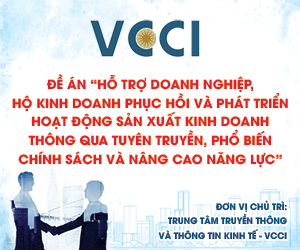Solution to promote value chain finance
According to experts, value chain finance is one of the options for improving access to bank loans for small and medium-sized businesses (SMEs). However, in order to develop this finance, leading enterprises must play a larger role in the value chain.

The need for bank loans for localities to develop raw material supply chain models in the years 2024-2025 is expected to be around VND 552.3 billion. This capital demand is projected to rise in the coming years if value chain finance remains successful.
Effective lending model
Value chain production is becoming a global trend, with the goal of fully leveraging the potential and strengths of the value chain members. For example, a smartphone, such as the iPhone or Samsung, requires the participation of numerous countries throughout the world. As a result, value chain finance is an unavoidable development that provides numerous benefits to stakeholders.
For example, in the agricultural sector, Mr. Tran Van Tan, Member of the Board of Directors of VietinBank, stated that through the study of 5 agricultural value chain finance models in 5 countries around the world, it has been shown that value chain finance has contributed to improving cash flow management, developing cross-selling of the bank's products, and increasing the role of communities and cooperatives in rural areas...
Furthermore, value chain finance improves SMEs' access to bank loans by leveraging guarantees or re-lending from upstream firms. For example, in the rice industry, huge wholesalers frequently lend to traders in order to invest in producers. Farmers can purchase raw materials on credit and obtain advance payments from processing industries (directly or through associations).
Commercial banks can grow loans without collateral if this model is efficiently implemented and the firms in the value chain operate transparently, as they have control over the cash flow. This would address the "critical weakness" in small and medium-sized enterprises' financing availability.
A senior manager from Agribank also stated that the bank is willing to boost value chain finance. "We have performed surveys and want to launch a value chain fiance program. "For SMEs with management capabilities that do not meet the requirements, they must connect and rely on each other to form a value chain in order to operate their production and business more effectively," she told the audience.
Promoting the role of the "locomotive"
In Vietnam, agricultural value chain finance was tested early on, but the results were disappointing. Mr. Dao Minh Tu, Deputy Governor of the State Bank of Vietnam, also mentioned that 21 value chain models were piloted 13 years ago, but the majority of them failed. Only one flower export chain in Da Lat succeeded thanks to funding from overseas companies.
According to Mr. Dao Minh Tu, a supply chain must provide benefits to all parties. If the connection is too loose, it will be difficult to attain effectiveness. "The success of this model heavily depends on the close coordination of the components in the value chain," Mr. Tu said.
In reality, there are limitations in value chain finance, such as the lack of tight production in some localities; the number of enterprises with management capacity to play key roles in the value chain remains limited; and the ability to cooperate and link among value chain participants is weak, posing a risk of breaking the value chain...
To ensure that value chain finance develops effectively and can be scaled up in the future, leading enterprises in the value chain must be transformed into banking agents, allowing them to act as the focal point for bank loans across the entire value chain and control activities within it.
Furthermore, it is vital to increase the bridging role of business associations. Mr. Nguyen Van Than, Chairman of the Vietnam Small and Medium Enterprises Association, feels that small and medium-sized businesses have little alternative but to gather documents and send them to business associations. The latter will serve as a bridge with banks.
Furthermore, ways for connecting business associations with local industries must be researched in order to improve business support. "The value chain financing method is seen as effective, but a flexible bridge between the participants remains necessary. "The association is willing to collaborate with organizations such as accounting associations and banks to promote this finance," Mr. Than stated.








